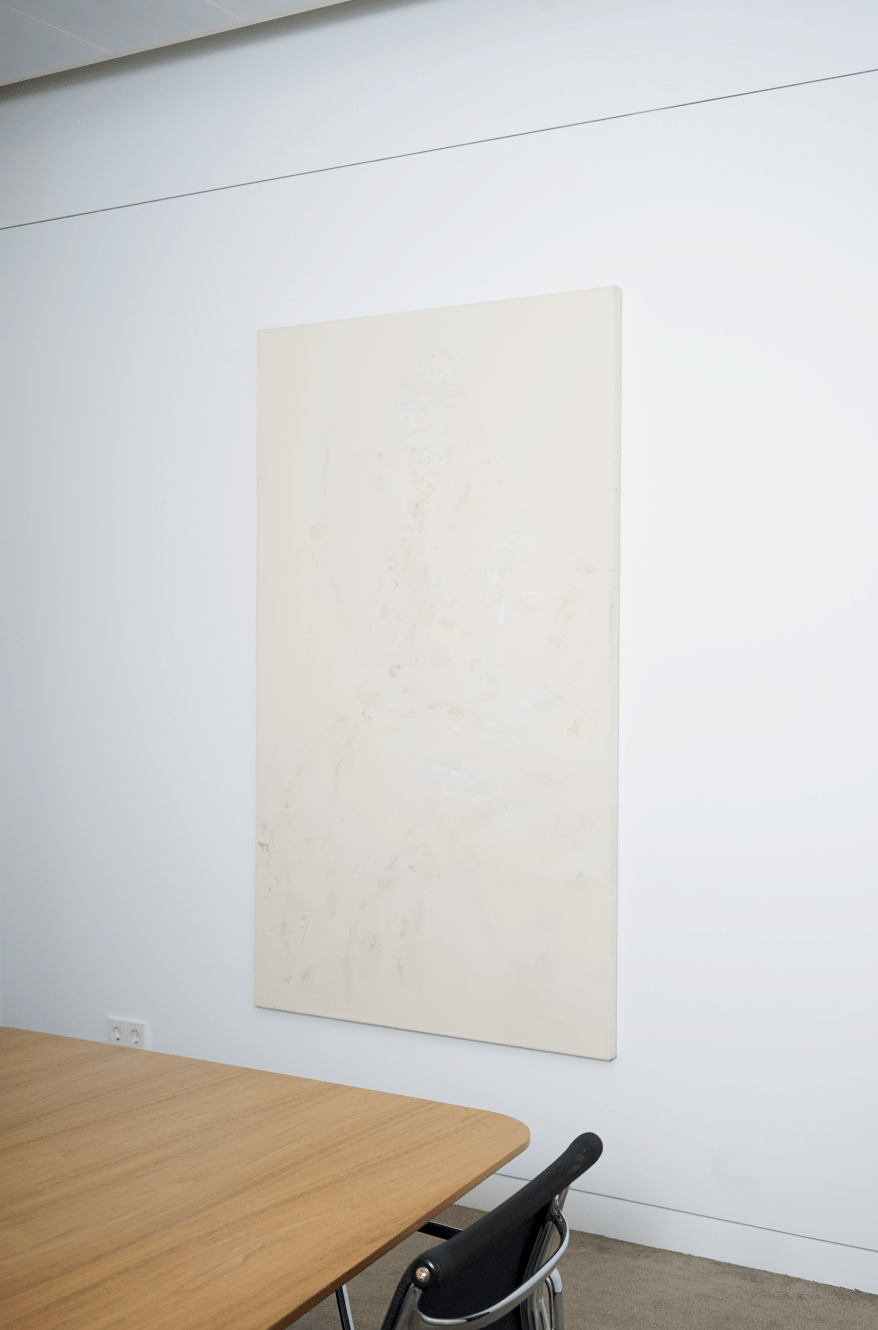

Maaike Schoorel (b. 1973)
Zelfportret als Minerva (Self-Portrait as Minerva)

In September 2004, Maaike Schoorel had her first solo exhibition at the Diana Stigter gallery on Hazenstraat in Amsterdam. It was a show none of the attending people will ever forget; all there was to see were white canvases. Equally striking was that on the afternoon of the opening, a lot of red stickers had already been placed next to the paintings. It turned out that the famous British collector Charles Saatchi had visited the exhibition and had instantly become a great admirer of these wondrous, white canvases.
Schoorel had just moved to London at the time, because she wanted to spread her wings and to look for someone to represent her works in Britain. Her studio was located in a remote corner of the city and not exactly the right shape or state to accommodate her fragile works of art. Here’s an odd story. One day, someone representing a large London gallery came to visit Schoorel. After a short conversation, the gallerist pulled a dream contract out of his pocket; a substantial salary and a beautiful centrally located studio, without a leaking roof. However perfect, Schoorel politely refused. She had come to London for a different type of gallery, more personal and more real. Schoorel did not want to commit to a commercial money factory. Another renowned gallery, in line with her wishes, showed interest shortly afterwards. This road was longer but also more beautiful.
The Frans Hals Museum in Haarlem has a famous portrait of Minerva in its collection, painted in 1611 by the Mannerist artist Hendrik Goltzius. Minerva is one of three works that Goltzius made for Haarlem‑based statesman Johan Colterman. The three paintings together depict the humanistic educational ideal: theory (Mercury) and practice (Minerva) which lead to skill and virtue (Hercules). During the exhibition Conversation piece IV (which ran from 16 November 2012 to 17 February 2013) an almost entirely white painting by Maaike Schoorel, called Zelfportret als Minerva (Self Portrait as Minerva) was hanging close to it. It is no coincidence that Schoorel chose Minerva. After all, she is the goddess and patroness of the arts. The Conversation-exhibition was one part of a series in which well-known and lesser-known artists respond to works in the interesting Old Masters Collection of the Frans Hals Museum.
The painting is a classic “Maaike Schoorel”, if you may use such a term when discussing young artists. At first sight, it’s a white canvas with some indefinable stains. However, when you take your time, the composition will slowly appear. Slowly but surely, a complete picture is painted in front of your eyes. Time and “taking the time” are important concepts for Maaike Schoorel. These white canvases force the viewer to concentrate and pay attention, which is something that is no longer self-evident in the world we live in, dominated by fast consumerism and instant gratification. Funnily enough, her “white” canvases are almost never really white; they always contain a mix of colours, such as yellow, light pink, cold blue, etc. But this is only revealed to the viewer after he or she has taken a good look at it – for more than a little while.